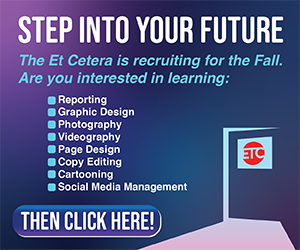Faculty, alumni address the rise of AI art
February 15, 2023
Artificial intelligence image generators are the latest trend sweeping social media, with the ability to generate stunning artwork in seconds from a simple text prompt.
While creating art using AI is nothing new, the increased technological sophistication and accessibility to the public has had staggering results, and many artists are worried about their future.
“AI is doing much more whimsical stuff than I could do or have the time to do,” said Walter Land, a digital media professor at Dallas College. “Why would somebody pay me to do an illustration of them when they can get an app, pay for it for one month and create their own images?”
This isn’t the first time creatives have been threatened by newer technology. Land, a graphic designer by trade, related the new AI art trend to the shift from traditional to digital in graphic design.
“When I graduated college, I came out right at the cusp of it changing. Through four and a half years of college I’d never touched the computer,” Land said, “My very first job in the industry was on a computer.”
The advent of digital tools made the traditional skills he’d learned in his educational years mostly obsolete.
Now he feels artists today could be put in a similar situation.
Art generators like Midjourney can create fully rendered artwork within seconds, making many artists question whether the process will still matter when it comes to an employer’s bottom line.
“It’s very tough as an artist, as a creator, as an illustrator, as a designer, to ask someone to wait a week or two or more for their product when they can type something into an AI generator and get it in seconds,” said Jeremy Biggers, an award-winning artist and Eastfield College graduate.
Although the technology currently has a few drawbacks, many commercial artists have wondered if AI art is going to be the new normal for designers and artists doing professional work.
“If you can get something for free and instantaneously versus paying someone upwards of hundreds or thousands of dollars, and then having to wait for a few weeks, everyone’s going to pick the free and quick version,” Biggers said.
Land said automation in his field has also made things easier for clients.
“Just being done by hand doesn’t mean much when you’re looking at how fantastical the image is,” Land said, “I see it in terms of the end user being able to get better imagery or stuff like that at a lesser price… I studied in an era where posters were the meat and bread of design studios. Who uses posters and that stuff now?”
AI image generators produce art using thousands of images across the web in their training sets.
The images used in these training sets are then processed to generate a new image in seconds.
This has raised concerns among artists who’ve witnessed outputs that look eerily similar to their own work.
“It’s hard for me to understand where the ownership lies,” Biggers said. “I think there’s a super gray area in terms of ethically if that’s OK to be pulling from artists who didn’t consent to their work being used as part of the learning model.”
Biggers compared this to how human artists draw inspiration from other works to create their own.
“I think that’s all the AI learning models are doing is pulling from those different artistic sources, so I think in that way it’s getting the same thing without as much of the heartache of experimenting and creating a style,” Biggers said.
Thousands of unsolicited images being processed in these training sets calls into question the ethics of AI art.
Because of this lack of legal clarity, many companies are wary about using AI technology.
Recently a trio of artists filed a lawsuit against Midjourney, Deviantart and Stability AI, proprietors of popular AI text-to-image generators.
The artists cited unfair competition laws and copyright violations, claiming their work and that of many others had been appropriated without permission.
Similarly, Getty Images is suing Stability AI, the creators behind Stable Diffusion, because the image generator has processed numerous images protected by licensing fees. CEO Craig Peters said in a news release that Getty hoped to set a legal precedent for negotiating use of images from its platform, citing past lawsuits against Napster and Spotify.
“We’re gonna have big conversations about authorship… aura and originality,” said Erica Stephens, a fine arts faculty member at Eastfield.
In December 2022, Stability AI announced it would allow artists, whose work had been used to train the AI, to opt out of their newer version.
This move was unpopular with many artists on social media who argued they were never given the choice to opt in to begin with.
“The responsibility is always given to the people that it shouldn’t be given to in terms of making sure we protect ourselves, and the protections are usually offered to the people that took the work before it’s offered to the people that created the work in every facet,” Biggers said.
Land compared the controversy to legal disputes in the music industry.
“I think if they’re able to prove that their work was used, there needs to be some type of payoff. Like the music industry, you pay for sampling,” Land said. “It’s established now. If it’s proven you’ve sampled someone’s work, they have to be paid for it.”
Once the lawsuits are settled and the legal boundaries of AI art are established, the benefits of AI technology in the broader art and design community may be called into question.
There’s a possibility AI art could be integrated into a trained artist’s process once it becomes more advanced.
“If you’re a person that needs to pull from references or you would like to see something before putting in necessarily the hours it would take to come up with a mock-up or a sketch, it can be a tremendous tool,” Biggers said. “It’s still not quite there. At least the ones I’ve used aren’t quite ready for that level of detail, but I think it’s only a matter of time before that stuff comes.”
Artists using AI have faced much backlash on social media as well and are often denigrated as not being true artists.
“I think we’re doing them a disservice because the art and the craft may be in the language that they are composing to create the work,” Stephens said. “I think this is going to end up being its own field and its own genre.”
Amanada Araujo, a former Eastfield student and professional graphic designer, also expressed concern about how AI artists are treated.
“I don’t think they’re bad people. I think they’re curious, and we shouldn’t fault them for trying something new,” Araujo said.
Land also fears the new technology could impact his students.
”It’s going to affect jobs,” Land said, “Not necessarily take jobs away from people but it’s going to add more people that necessarily don’t have the skill set to do it. And as a graphic designer, or even an illustrator, it makes having a living that much harder,”
Stephens believes the market will decide whether AI beats out traditional skillsets.
“If we as people, as consumers, as art and design appreciators, collectively find a way to say no, that’s not good enough, that’s not enough, that’s not fulfilling, that’s not exciting, and we can do more then why aren’t we doing it? Then it’s supply and demand,” Stephens said.
There’s still the concern about how AI will shape the future art and design industries. Land believes a niche for trained artists would eventually arise in a post-AI art world, which he called a “renaissance.” Biggers shared a similar sentiment.
“There’s going to be somebody that comes in and says ‘hey, I miss when things looked like this,’ and that’s going to be the opportunity for physical human artists to be able to put their human imperfections into things. At a certain point when things get too polished, the real kind of comes back to the forefront.”
On the topic of artists fearing displacement, Stephens expressed the importance of passion and dedication.
“Whether this technology existed or not, you have to find your voice,” Stephens said. “You need a very specific style, you need to be committed to what you do, you need to know who you are, and just be all in on your authentic voice and viewpoint. AI art or not, you need that to be successful.”
Araujo suggests this technology could help future artists rather than invalidate what they have to communicate.
“When we’re afraid for our jobs because of technology we forget that we, as professionals, also evolve,” Araujo said.
Biggers also believes artists need to focus on what’s in front of them now and worry about AI art later.
“Just do what you can while you can and then if it changes. Worry about that when it gets here,” he said. “But until then, just grind it out and see what happens.”





